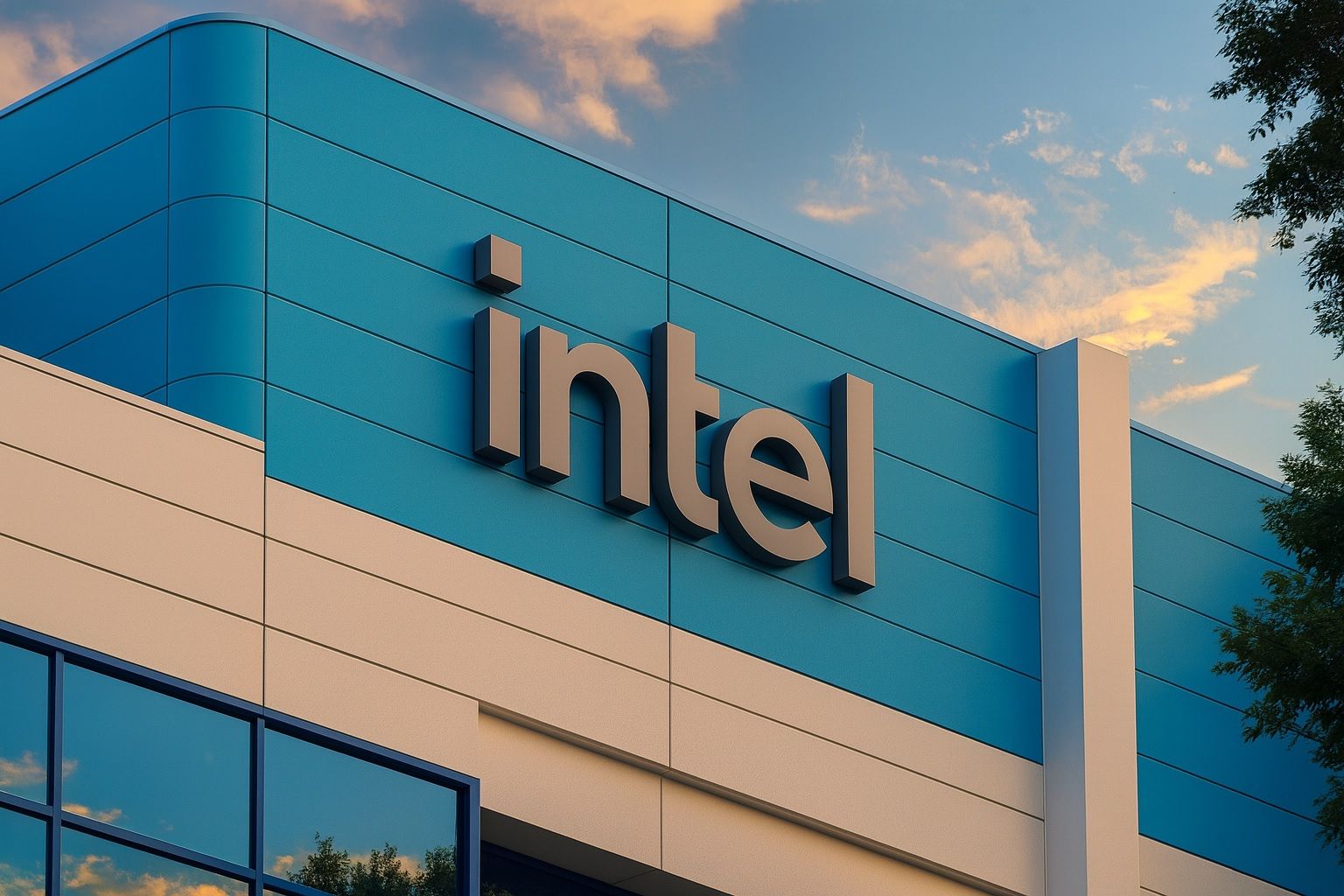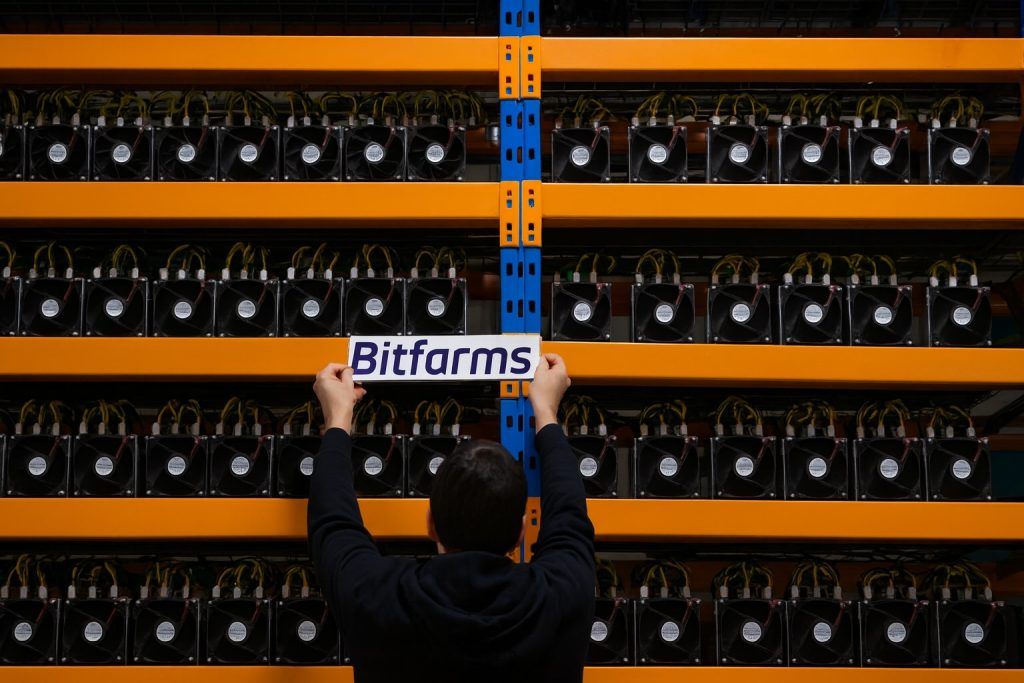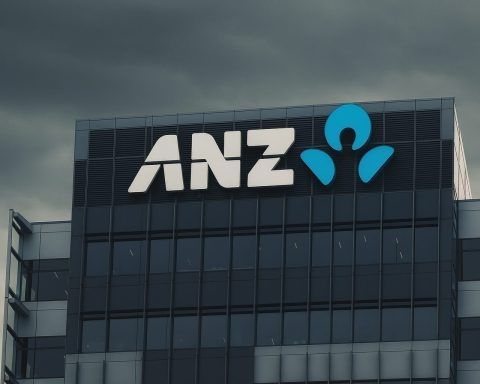- Intel stock near 2-year high: Shares of Intel Corporation (NASDAQ: INTC) trade around $37 on Oct. 20, 2025, essentially flat from Friday’s close and near their highest level since 2023, after surging roughly 85% year-to-date [1]. The chipmaker’s 2025 rally has vastly outpaced the broader market, though the stock remains well below its 2021 peak [2].
- Blockbuster boosts: The recent surge is fueled by blockbuster developments – including an unprecedented U.S. government 10% stake (~$10 billion via the CHIPS Act) and Nvidia’s $5 billion investment for a ~4% equity share [3] [4]. These big backers, along with rumors of new partnerships, have injected significant AI-driven optimism into Intel’s outlook.
- AI deals and rumors: Investors are bidding up Intel on excitement over artificial intelligence. This week, reports suggest Intel’s foundry unit secured a major AI chip client, speculated to be Microsoft’s Azure cloud, which sent shares modestly higher [5]. Earlier this month, talk of AMD possibly using Intel as a foundry (chip supplier) sparked a 4% intraday jump [6]. And in late September, Intel’s stock leapt 6% on rumors that Apple might invest or become a chip customer, highlighting the market’s sensitivity to any AI partnership news [7].
- Caution on fundamentals: Despite the hype, Intel’s fundamentals remain shaky. The company is still losing money – Q2 2025 revenue was $12.9 billion (flat year-on-year) with gross margins under 30%, and analysts don’t expect Intel to return to profitability until at least 2026 [8]. New CEO Lip-Bu Tan (an industry veteran who took the helm in 2025) has slashed costs – cutting ~20% of staff and shedding non-core businesses – but ongoing losses and manufacturing challenges temper optimism [9] [10]. Intel even recorded an $18.8 billion loss in 2024 (its first annual loss since 1986) amid heavy investment in manufacturing, a setback Tan is now trying to reverse [11].
- Analysts divided: Wall Street’s view on Intel is mixed. Many remain skeptical – Bank of America downgraded Intel to Underperform, warning the stock had climbed “too far, too fast” without corresponding business improvement [12]. The average 12-month price target is only about $26, implying ~30% downside from current levels, and the consensus rating is a lukewarm “Hold/Reduce” [13]. Deutsche Bank reiterated a Hold with a $30 target even after the AMD-foundry rumor, citing execution risks [14]. However, a few see a potential comeback: market pundit Jim Cramer recently hailed Intel’s turnaround, calling CEO Tan a “legendary semiconductor investor” after he secured the big government, Nvidia and SoftBank deals that “sparked a roughly 50% rally” in the stock [15]. Some bullish analysts have even raised their targets into the $40s following Intel’s Nvidia alliance [16], arguing the strategic partnerships and cost cuts give Intel a fighting chance in AI.
- Fierce competition: Intel’s rally comes as rivals thrive in the AI boom. Advanced Micro Devices (AMD) just hit all-time highs around $240 per share after scoring blockbuster deals to supply AI chips – including multibillion-dollar partnerships with OpenAI and Oracle that sent AMD stock up 30%+ in a day [17]. Year-to-date, AMD has climbed ~80%, and some Wall Street bulls now predict AMD could reach $300 amid surging demand for its GPUs [18]. Meanwhile, Nvidia remains the undisputed AI leader, commanding roughly 90% of the data-center AI processor market and recently topping a $1 trillion market cap [19] [20]. Nvidia’s lofty valuation (about 50× earnings) reflects sky-high growth expectations in AI [21]. By comparison, Intel trades at a steep discount – its market capitalization (~$175 billion) is roughly half of AMD’s and just a fraction of Nvidia’s [22] – underscoring how far the company still lags its peers. Intel is racing to catch up, recently unveiling a new data-center AI chip (code-named “Crescent Island,” due 2026) and a next-gen PC processor (“Panther Lake” on its upcoming 18A process). But reports of low yields on Intel’s cutting-edge 18A wafers have raised doubts about its manufacturing ramp [23], a reminder that TSMC (which is already moving to 2nm production by late 2025) remains well ahead in fabrication technology [24]. Notably, the U.S. government’s stake in Intel reflects Washington’s push to bolster a domestic “national champion” to rival TSMC and reduce reliance on Asian supply chains [25] [26].
- Short-term catalysts: In the immediate term, Intel’s Q3 earnings report – due this week – is a critical catalyst [27]. The company has guided for a slight uptick in revenue but a deeper loss for the quarter [28], so investors will be watching whether cost cuts and new partnerships show any early financial payoff. Any updates on foundry deals (for example, confirmation of the rumored Microsoft Azure contract) or on Intel’s AI product roadmap could sway the stock’s direction. With Intel shares nearly doubling off their January lows [29], expectations are high – leaving little room for disappointment if results or guidance falter.
- Outlook – what’s next: Looking ahead, the key question is whether Intel’s AI-fueled comeback can translate into a sustainable turnaround, or if the stock’s surge is a temporary “AI hype” sugar high [30]. Bulls argue that Intel’s slew of strategic alliances (from government and big investors to would-be customers) provides resources and credibility that could jump-start its innovation engine [31] [32]. They point to CEO Tan’s aggressive restructuring – from selling a majority stake in its Altera programmable-chip unit to chopping billions in expenses – as steps that may eventually restore profitability [33] [34]. Bears, however, emphasize that Intel still faces heavy lifting: it must execute on complex new manufacturing processes, win back chip market share from AMD and Nvidia, and improve margins – all while its core PC and data-center businesses remain under pressure. Moreover, Intel’s new status as a semi‐government-backed entity introduces geopolitical wrinkles; some overseas customers are reportedly wary of Washington’s influence, which could impede sales in China or other markets [35]. The broader market mood will also play a role. With many investors fretting about an “AI bubble” – over half of fund managers recently said AI stocks look frothy [36] – any stumble in AI momentum or broader tech sentiment could spark turbulence in names like Intel.
Bottom line: Intel’s stock has staged a remarkable rally in 2025 on the promise of an AI renaissance backed by deep-pocketed allies. As of October 20, shares are holding near multi-year highs on optimism that the storied chip giant might finally be turning a corner. Now comes the hard part: delivering tangible results. Investors should watch the upcoming earnings and product updates closely, as well as industry trends and policy signals, for proof that Intel can convert today’s hype into a lasting comeback. Any indication that the company’s AI plans are gaining traction – or faltering – will likely determine whether INTC’s resurgence marches onward or runs out of steam in the months ahead. [37] [38]
Sources: Intel Corporation stock analysis by TechStock² (ts2.tech) [39] [40]; Reuters financial news [41] [42]; Bloomberg News via ts2.tech [43]; Investing.com via ts2.tech [44]; and other market data as of Oct. 20, 2025.
References
1. ts2.tech, 2. ts2.tech, 3. ts2.tech, 4. ts2.tech, 5. ts2.tech, 6. ts2.tech, 7. ts2.tech, 8. ts2.tech, 9. ts2.tech, 10. www.reuters.com, 11. www.reuters.com, 12. ts2.tech, 13. ts2.tech, 14. ts2.tech, 15. ts2.tech, 16. ts2.tech, 17. ts2.tech, 18. ts2.tech, 19. ts2.tech, 20. ts2.tech, 21. ts2.tech, 22. ts2.tech, 23. ts2.tech, 24. ts2.tech, 25. ts2.tech, 26. ts2.tech, 27. www.reuters.com, 28. ts2.tech, 29. ts2.tech, 30. ts2.tech, 31. ts2.tech, 32. ts2.tech, 33. www.reuters.com, 34. www.reuters.com, 35. ts2.tech, 36. ts2.tech, 37. ts2.tech, 38. ts2.tech, 39. ts2.tech, 40. ts2.tech, 41. www.reuters.com, 42. ts2.tech, 43. ts2.tech, 44. ts2.tech








